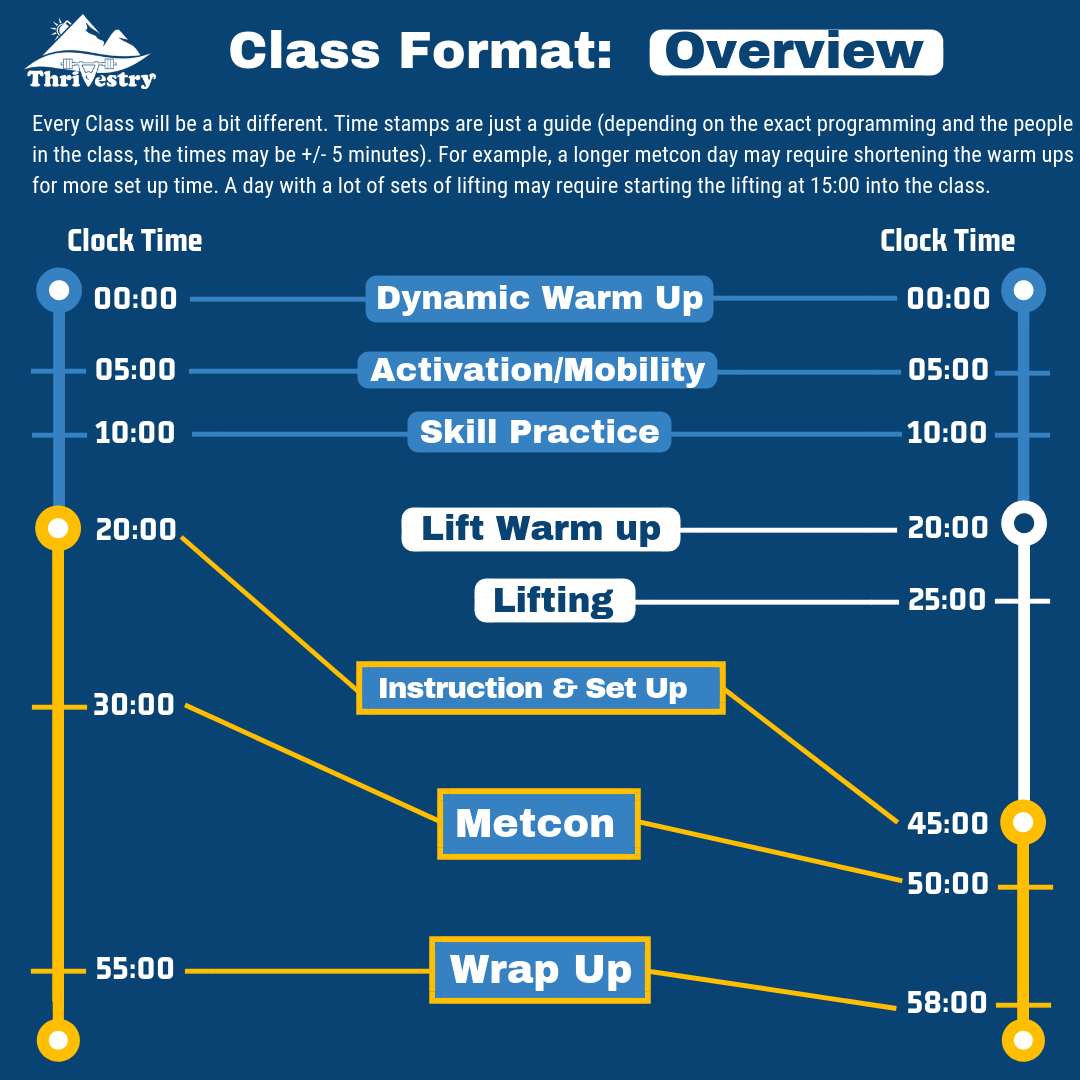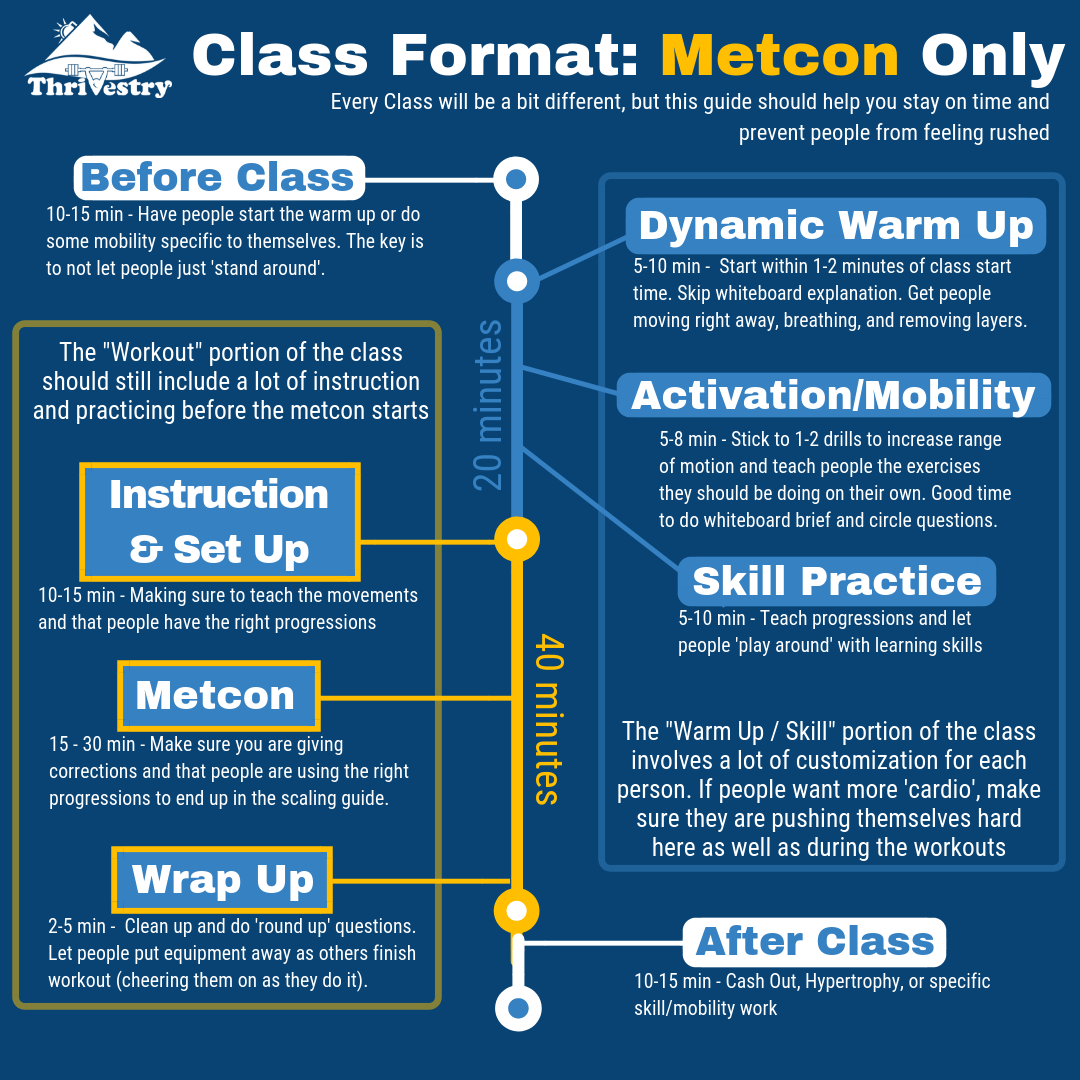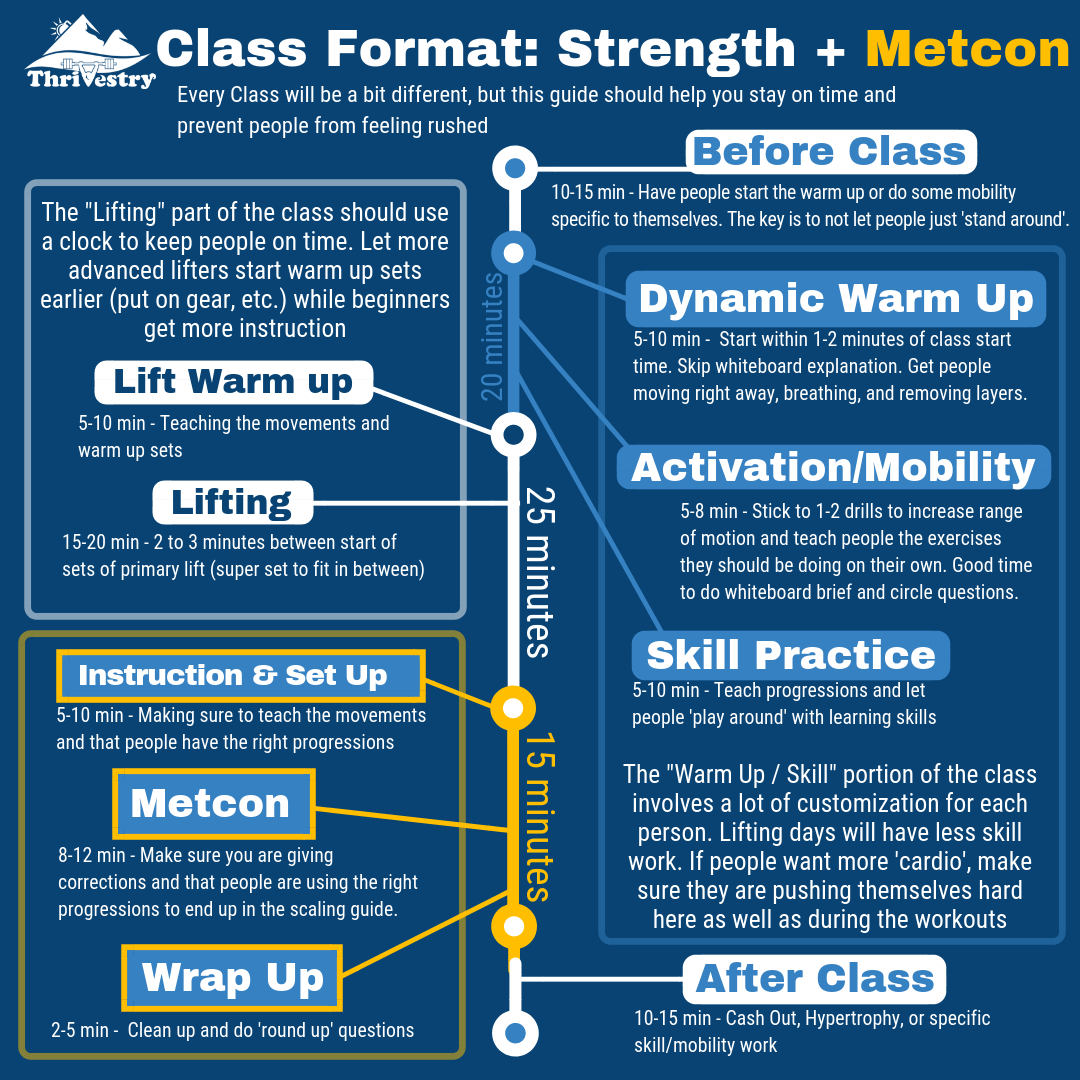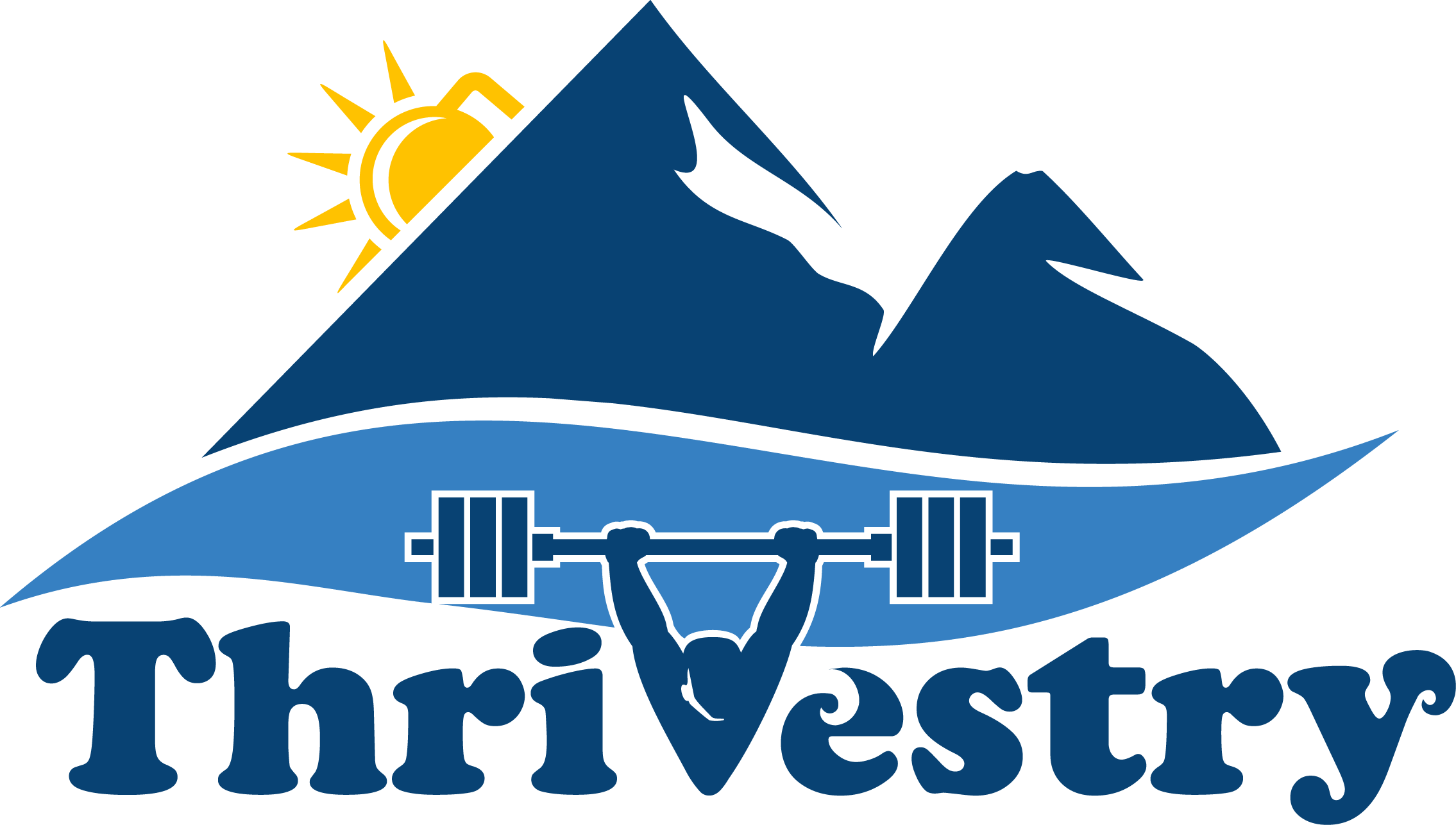14 tips for keeping the class on time and class format examples
Time management is always an issue when we are trying to cram as much value as possible into people’s visits to the gym.

To help stay on time, I’ve created three infographics to help coaches stay on track with the two primary formats we use.
Down below, I’ll go over some tips to help you keep your class on time, even when it is jam packed with awesome-fitness-magic!
The Overview
This first graphic above, is an overview comparing the two different types. The thing to remember is that these are just guides, and that coaches should feel comfortable shifting times around if they want to spend more, or less, time on one factor or another. These are just recommended times for 90% of classes.
Metcon Only
This next one is for when we are doing a longer metcon and no lifting. I have expanded out the timeline so I could include some notes for each section of the class. I’ve also added sections on what people should be doing before and after class.

Strength + Metcon
This last graphic is for when we are including some lifting into the class. The warm up work is going to be similar, but it may need to be condensed so that people can have more time to lift (and why we skip skills on these days occasionally).

There are a few overall things to note:
- The ‘warm up / practice’ portion is always going to be 15-20 minutes no matter what the format is. Make sure people who want ‘more cardio’ are pushing themselves here and not coasting.
- The metcon should always have time for instruction.
- Coaching and interactions should be a constant through the entire hour. Warming up, lifting, during the metcon… a good coach is giving feedback the entire time!
Tips for Staying on Time
If you are dealing with larger classes, you have a substantial amount of people asking questions, or you just like to talk a lot… you probably have trouble running out of time fairly often.
Staying on time is important because you don’t want people to feel rushed, and you don’t want people to be late (especially if it is a morning class). And if your gym has back to back classes, you can make the later classes late (even if you aren’t coaching them)!
Here are 14 of the best ways to make sure the class runs smoothly and stays on time:
Take a few minutes to review the programming ahead of time. Unless you have been coaching full time for 5+ years, you probably need to see what you’ll be responsible for delivering that day so you don’t end up getting lost or having to look something up.
START ON TIME. Obvious, I know. But in this day and age it has become acceptable to start things 5 minutes late. Get in the habit of starting right on the hour to make sure you don’t end up rushing things later.
Get people moving on the warm up right away. Like IMMEDIATELY. People do not want to stand around and do a 5 minute whiteboard discussion. By starting right away, people will be more inclined to show up on time as well.
Never spend more than 1-2 minutes just talking. Talk about the whiteboard while people are recovering from the warm up. Split up the whiteboard talk into multiple points throughout the hour instead of slogging through it in one go. Do the circle question during the mobility or in between lifts (have people take turns). If you are coaching something in depth, have people practice movements, and split up the principle into smaller chunks. It also helps to think about what you are going to say before you interrupt everyone to listen to you.
Feel free to modify or take out some sections of the lesson plan. The full programming is a bit of a ‘best case scenario’. If you have a huge class of beginners, and you have a lot of movements to cover, shorten the warm up and get through the mobility faster than usual. Spend that extra time having people do more practice reps with the movements happening in the workout.
Split up the class. Mostly this pertains to ‘advanced’ folk but let them go off and grab their gear and start doing some warm up sets as you take the newer people through some coaching and drills. Most advanced people will be lifting more weight, so they’ll need a bit more time to ramp up. This will also allow you to spend more time on the basics for those who need it.
Use a timer. When doing things like skill work or lifting, turn on the timer so people know how much time they have. When lifting, have people try and stick to starting each set every 2-3 minutes (sets and reps depending). At the very least, start giving them time checks so they know how much more time they have to get their lifts in before they need to start getting ready for the metcon.
Start talking about the metcon as people finish lifting. While people are resting between sets, demonstrate a movement or two. Maybe have them start setting up and practicing a few reps (they may need some extra rest before that next heavy set anyway!)
Grab the newer folks to start going over metcon movements before getting everyone together. During lifting and warm ups, the more advanced people will probably appreciate the extra time to get another set or two in (or some additional practice on a skill). The newer people will probably be done lifting earlier and not be as taxed because they aren’t lifting as heavy. Gather up the newer people and start going over the basics and progressions while the more seasoned people get a few extra minutes finishing up.
Stagger start, with the ‘slower’ people going first. When allowing the more advanced folks extra time on the skills and lifts, you may have time to get a first wave started. This will make sure they have enough time to finish the workout without too many modifications. It will also make it more exciting as the ‘faster’ people end up trying to chase down the people who have a head start (as well as having people finish within the same time frame).
Avoid overwhelming people with information (see 1-2 min rule above). Sometimes it can be easy to spend 10 minutes going over the nuances of a clean or the progressions of a kipping pull up. Save these coaching moments for the skill work. When getting ready for a metcon, just pick 1-2 points for each movement for people to focus on.
Pay attention to the scaling guide, and course correct! This is a big one when it comes to ‘for time’ workouts. The scaling guide will tell you how much time you’ll need. Try to budget a couple minutes after the ‘long’ side of the scaling guide for clean-up and wrap up (and in case someone goes over by a few minutes). Then pay attention to where people are. If they are falling behind on the scaling guide, modify the workout so they finish within the scaling guide. Ideally, the whole class finishes within a few minutes of each other (that means that everyone scaled properly)!
Tell people to ask you again later. When someone has a complicated question, try and answer it succinctly. But if you know you need more information, or more time, ask them to come back to you after the workout or email you. Avoid getting into the weeds with 15-minute discussions on the different types of weight placement during the pulling phase of the snatch or what time they need to eat broccoli.
Plan on finishing a few minutes early. Make it a habit of planning to finish with time to spare. It is always best if people aren’t rushing out of the door after a workout. Having a little ‘wiggle room’ will also prevent things from running long. It will also give you time to circle people up and connect everyone through the shared pain and shared laughter that many workouts have. I like to end with a question: “What did you see someone do today that was awesome?” or “What was your win for the day?” or “What did you learn today?”. These moments really help people feel good about their visit to the gym when they think back to it!
TIME!
That’s it! Do you have any other recommendations for keeping the class on time? Post them to our FB page so we can all benefit (maybe I can do an update to this article and add them to the list).
I hope this helps you all get a better understanding of how to run a smooth class that delivers awesome results and an amazing experience!
Thrive on.
-jj

0 comments
Leave a comment